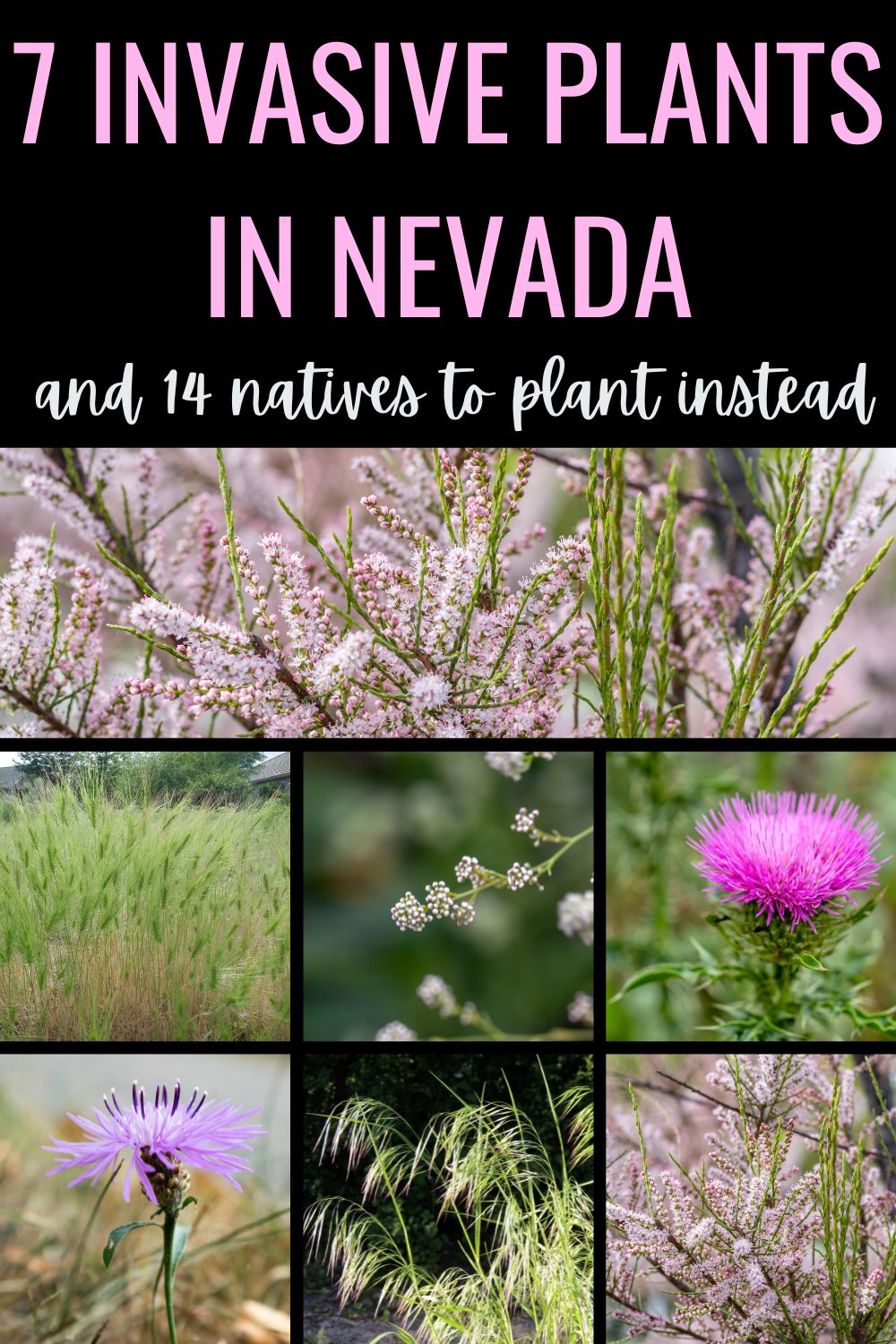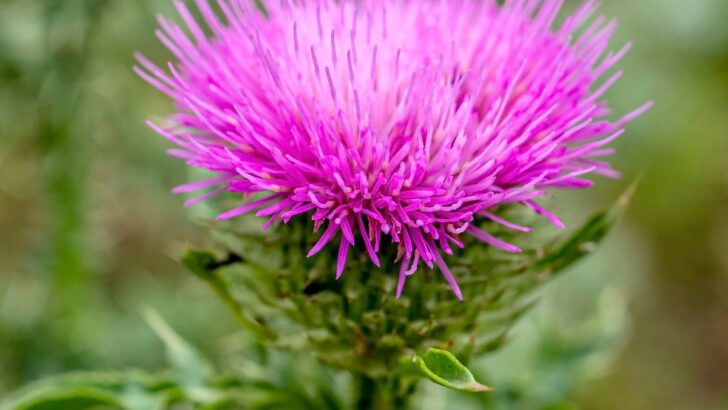Invasive weeds not only degrade ecosystems but also put a strain on economic and natural resources. Despite these plants’ adverse effects on the natural environment and human economy, some are still sold in nurseries and big box stores. Many of these plants can be found growing in your own backyard or your neighbors’ yards, whether they were planted intentionally or crept in of their own accord. To help guard against the damage of these non-native weeds, learn how to identify invasive plants in Nevada and discover which beautiful and beneficial native plants to grow in their place.

Invasive Plants in Nevada
The following guide provides descriptions of some of the worst Nevada invasive plants to help you identify them. Each description also includes suggestions for alternative native plants. If you discover an invasive plant on your property, contact your local Extension office to learn how to remove it effectively. Some removal methods can actually increase the spread of certain plants, so it is important to use the right method for the specific weed you are dealing with.
1. Cheatgrass (Bromus tectorum)
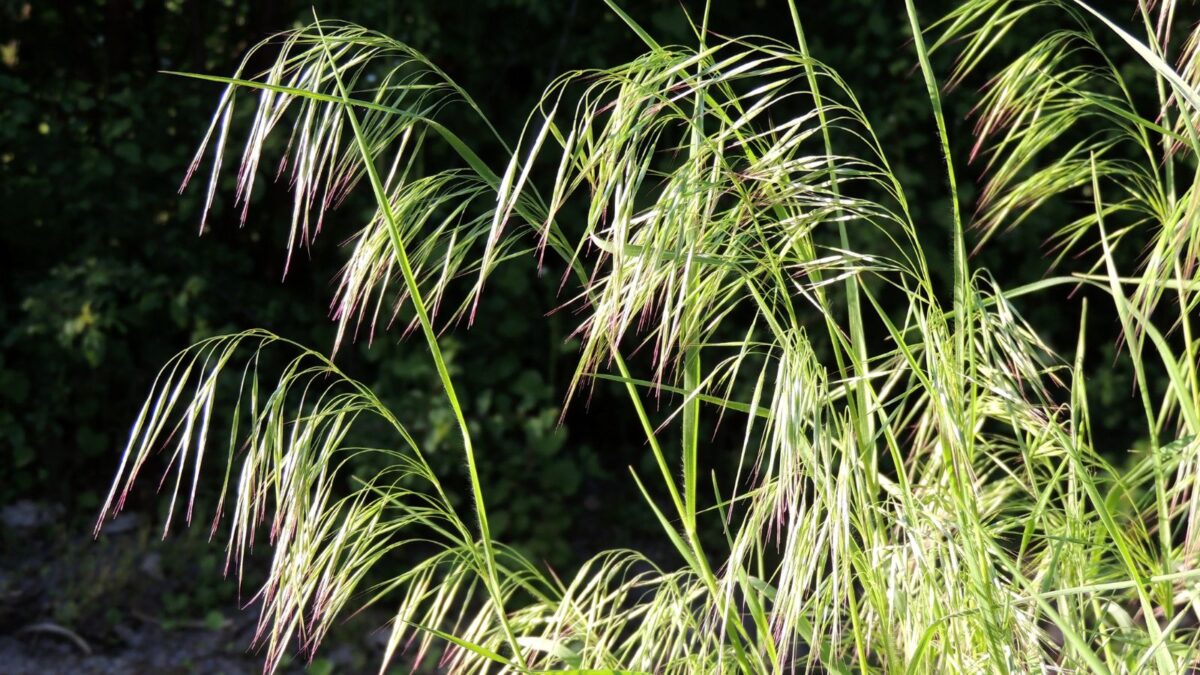
Also called downy brome or bronco grass, cheatgrass is an annual grass from Europe and Asia. It has become one of the most common plants in the state and poses a significant fire risk due to its tendency to dry out very quickly. Cheatgrass seed germinates in winter, grows in spring, and dies in early summer.
The plant ranges from a few inches to over 18 inches tall. The bright green, hairy leaves often take on a reddish or purplish tint but quickly dry to a reddish-brown and, eventually, straw color. The nodding seed heads look somewhat like a shepherd’s crook, and the seeds often get stuck on socks and dog fur.
Plant native grasses like blue grama (Bouteloua gracilis) or Indian ricegrass (Achnatherum hymenoides), two hardy perennial grasses that grow well among wildflowers. Their seeds are also popular among small birds.
2. Hoary cress (Cardaria draba)
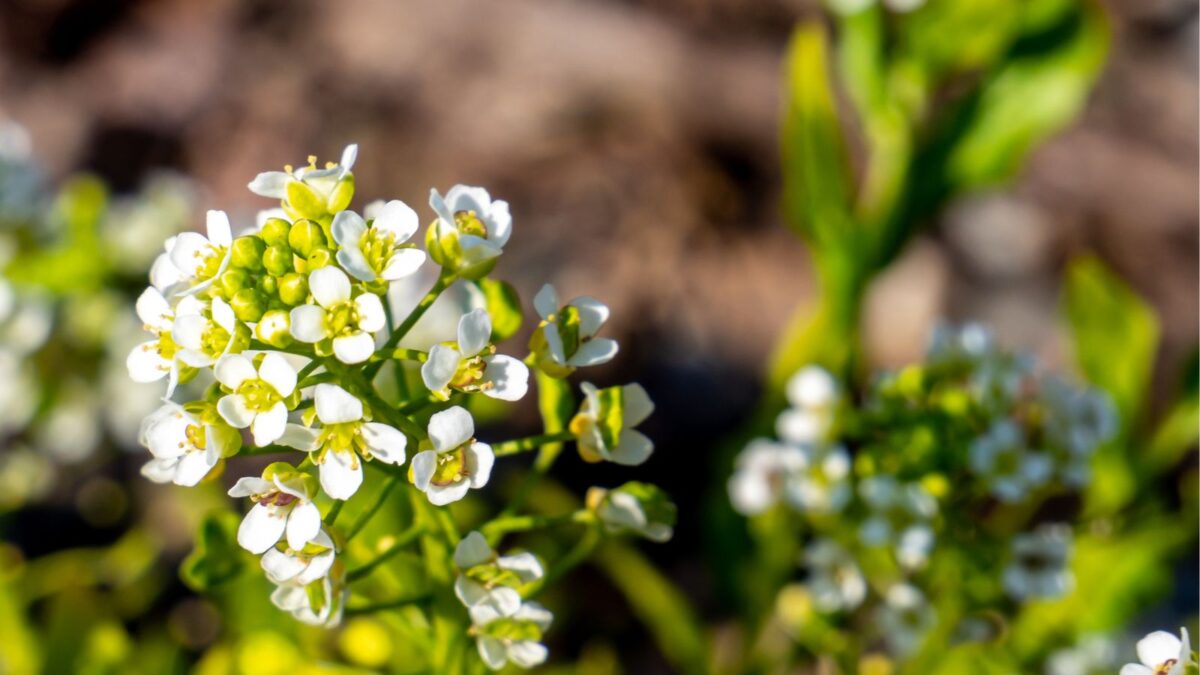
Hoary cress, or heart-podded whitetop, has deep roots and waxy, blue-green, lance-shaped leaves about one inch long. While the lower leaves have stalks, the stalkless upper leaves clasp the stem with two lobes. This perennial grows up to two feet high, topped with flat clusters of tiny white flowers, each with four petals, in spring. By midsummer, the heart-shaped seed capsules appear, each containing two reddish-brown seeds.
Native common yarrow (Achillea millefolium) has very similar flat, white flower clusters and lovely feathery foliage. Though arrow-leaf balsam root (Balsamorhiza sagittata) has yellow, not white, flowers, it features attractive arrow-shaped leaves.
3. Knapweed (Acroptilon repens, Centaurea diffusa, C. maculosa, C. virgata spp. squarrosa)
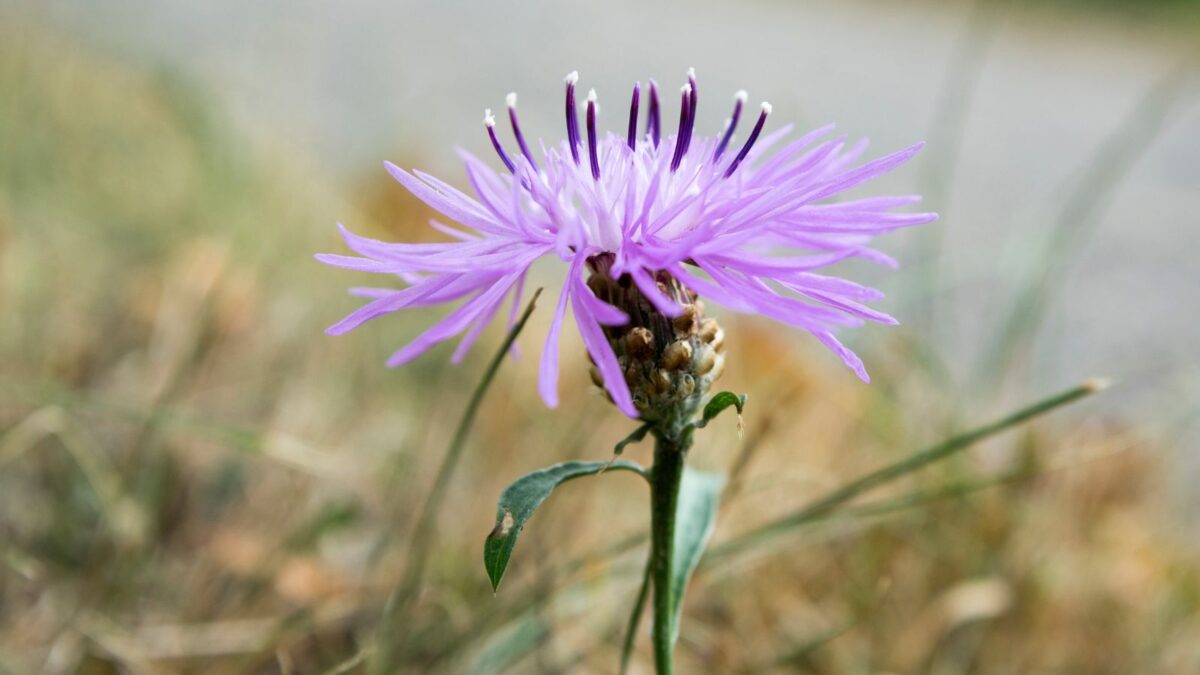
Numerous invasive knapweeds grow in Nevada, including Russian, diffuse, spotted, and squarrose knapweed. These highly branched perennials range from one to three feet tall with alternate leaves in various shapes, sometimes even on the same plant. The thistlelike flowers begin blooming in June or July in shades of white, pink, or lavender and often continue until frost. A long taproot makes these plants challenging to remove.
Wild geranium (Geranium viscosissimum), also called sticky purple geranium, and narrow-leaf fireweed (Chamaenerion angustifolium) both produce lovely pink flowers and would make an excellent replacement for any knapweed.
4. Medusahead (Taeniatherum caput-medusae)
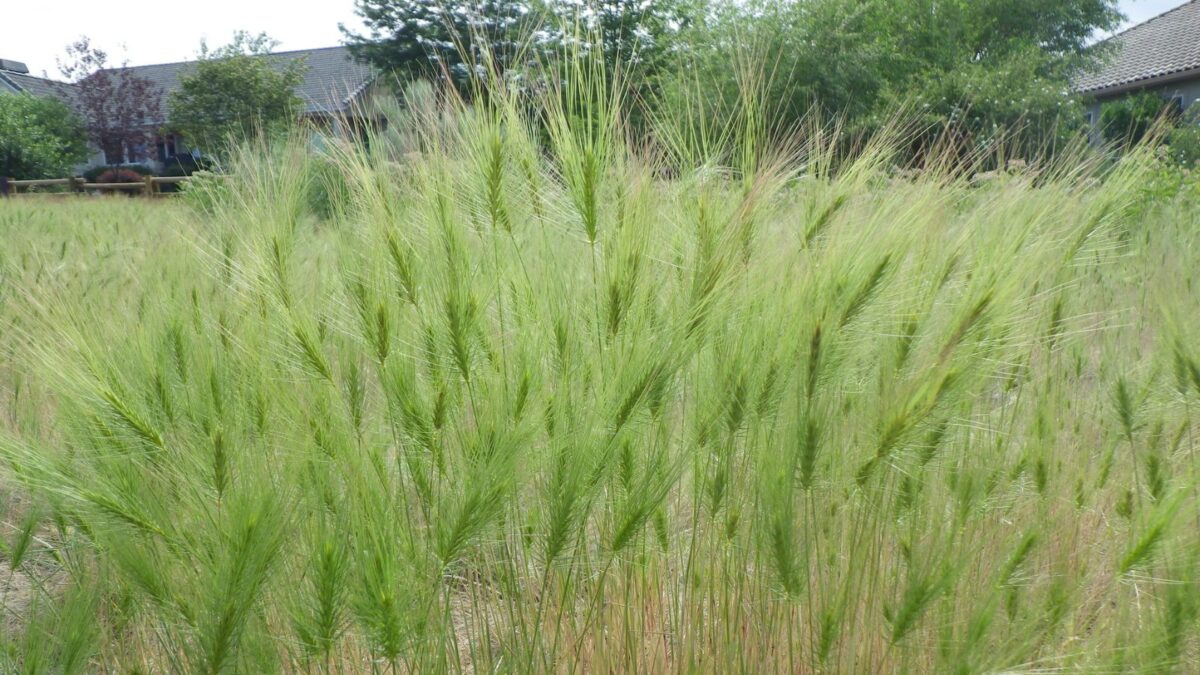
An aggressive winter annual grass, medusahead grows six to 24 inches tall with extremely narrow leaf blades. It flowers and sets seed in May and June, forming a spike almost as wide as it is tall. The characteristic long awns, or “beards,” of the inflorescence are stiff, twisted, and finely barbed. A bristly head persists after the florets fall away, often lasting into winter.
Native foxtail barley (Hordeum jubatum) and squirreltail (Elymus elymoides) are similar enough to be confused with medusahead, though they are perennials while medusahead is an annual.
5. Musk thistle (Carduus nutans)
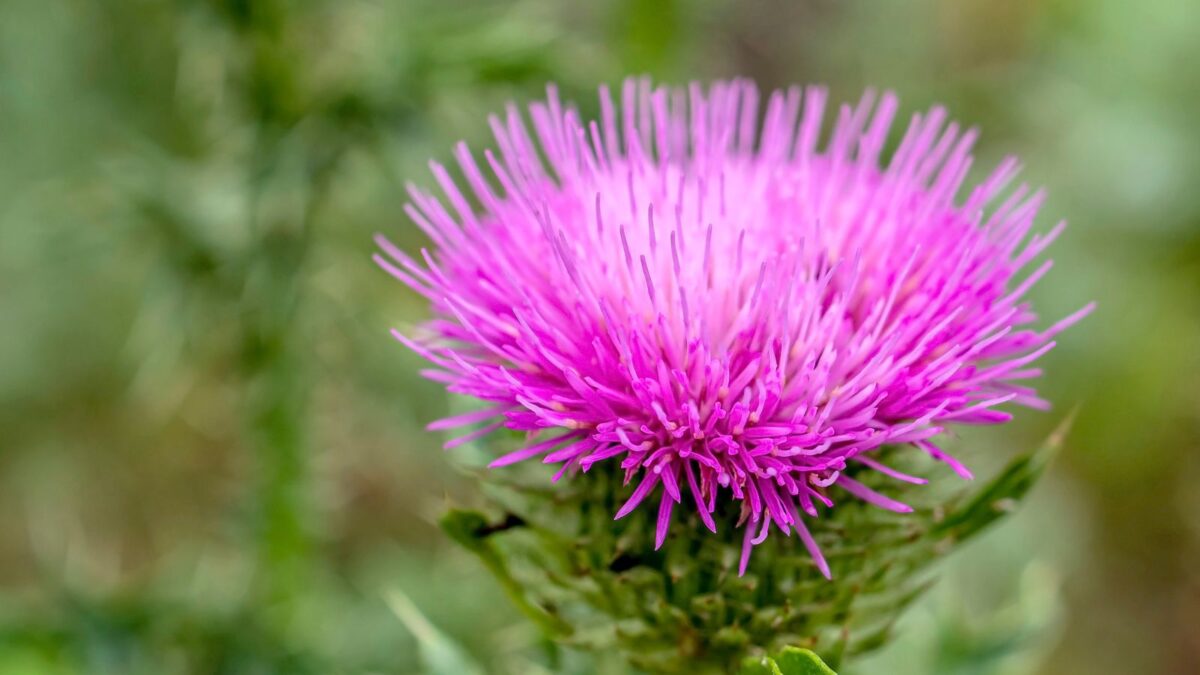
Musk thistle, or nodding thistle, is an aggressive biennial that averages 30 to 42 inches tall, sometimes reaching heights of 72 inches. A pale green central vein marks the alternate, dark green leaves, which feature the deep lobes and spiny margins characteristic of thistles. From June to September, deep rose to purple flowers one and a half to three inches wide bloom on long stalks, often bending at the neck. Look for the distinct bracts at the base of the flowers: they are broad and spine tipped, and the bottom row or two recurve, or bend down.
Though orange to scarlet rather than pink, the flowers of meadow paintbrush (Castilleja miniata) make a striking alternative to musk thistle. And white-tip clover (Trifolium variegatum) produces lovely, white-tipped flowers in shades of deep purple or pink.
6. Perennial pepperweed (Lepidium latifolium)
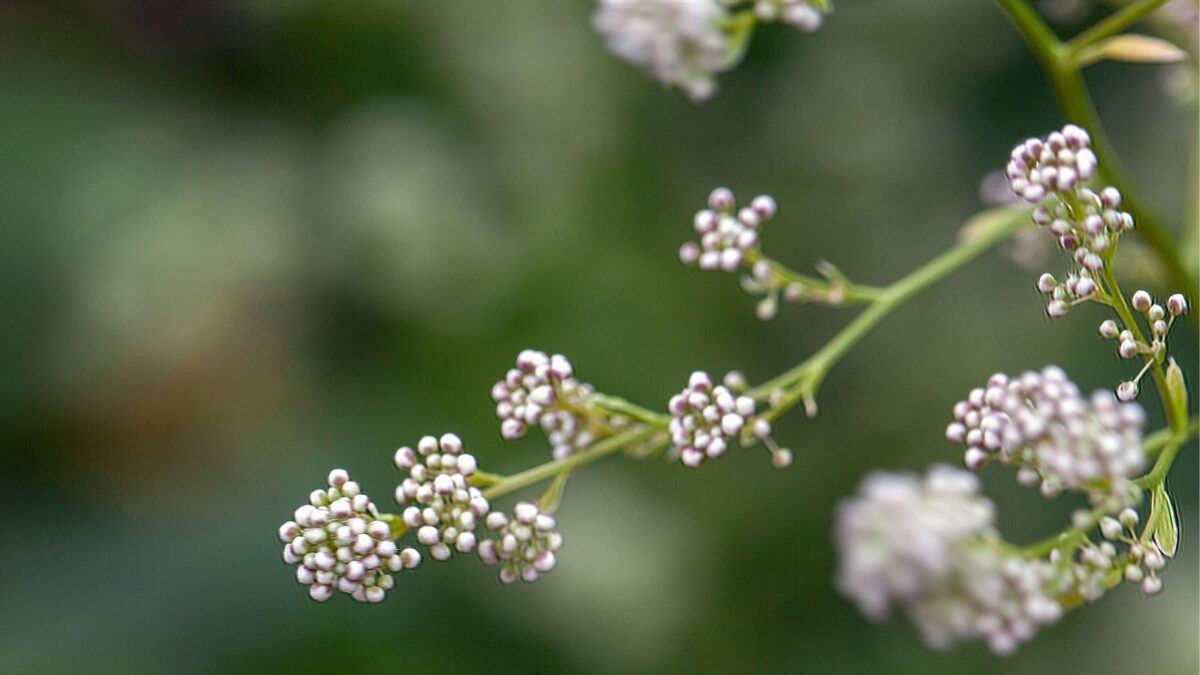
Sometimes called tall whitetop, perennial pepperweed grows an average of two to three feet tall and sometimes reaches heights of seven feet. Its bright to gray-green, lanceolate leaves can have smooth or toothed margins, and those lower on the plant are larger. From early summer through fall, dense, snowy clusters of small white flowers bloom at the ends of branches. Perennial pepperweed produces two-seeded fruit capsules but commonly spreads rapidly via creeping roots.
Replace perennial pepperweed with pretty native wildflowers like smooth blue American aster (Symphyotrichum laeve) or attractive flowering shrubs like red-osier dogwood (Cornus sericea).
7. Saltcedar (Tamarix ramosissima)
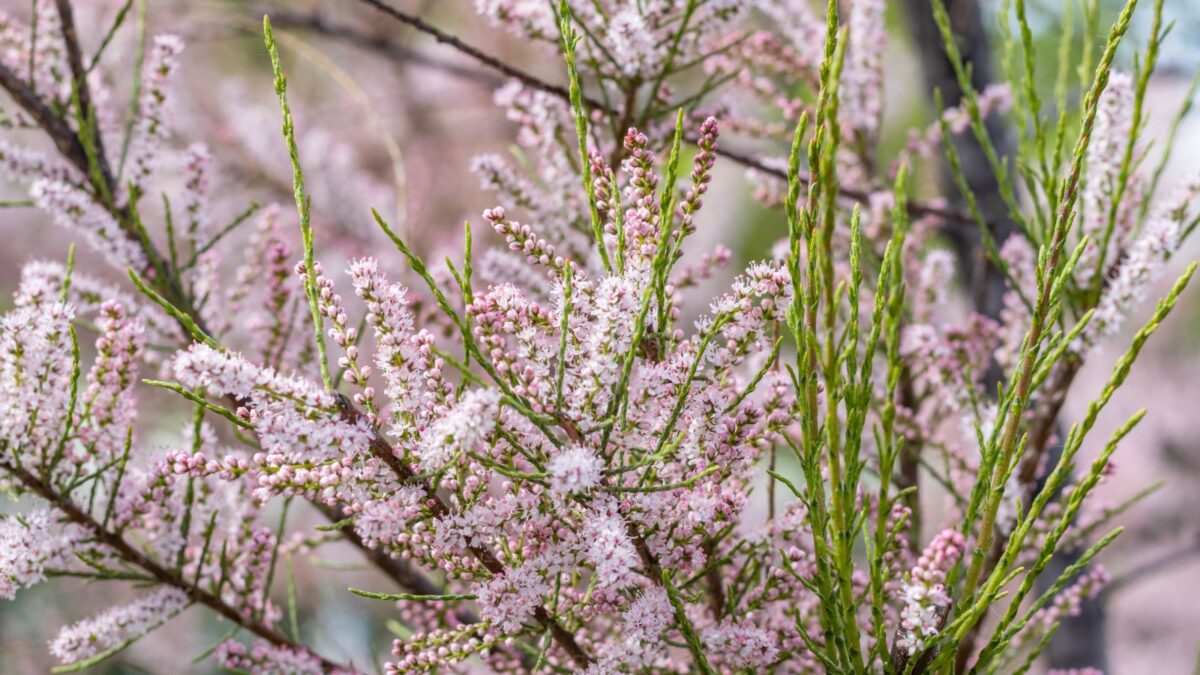
A deciduous shrub or small tree, saltcedar grows anywhere from five to 20 feet tall. Its small, scale-like leaves have a blue-green hue and strongly resemble those of a cedar or juniper. The reddish-brown bark becomes gray and fissured with age. In spring through late summer, tiny, five-petaled, white to pink flowers bloom in slender, finger-like clusters.
Western redbud (Cercis orbiculata) produces masses of lovely pink spring flowers, and Rocky Mountain juniper (Juniperus scopulorum) has blue-green, scale-like foliage similar to that of saltcedar.
Once you know what to look for, many types of invasive plants can be easy to spot — if not quite so easy to eradicate. Replace these aggressive non-native weeds with native plants for a beautiful garden that also supports wildlife. Gardening may be a hobby, but it can also make a difference!
